THE STORY OF THE
"SEVEN LAST PLAGUES"
| TABLE OF CONTENTS |
|
Part
I Another Sign
in Heaven
Victory Over
the Beast and Image
Two Songs of Moses
The "Image" Becomes History |
|
Part
II The Temple
and the Tabernacle
Seven Angels
Golden Bowls
Filled with God's Glory
The Tabernacle
Solomon's Temple
Ezekiel's Temple
|
|
Part
III 7 Last Plagues
1st Plague
2nd Plague
3rd Plague
4th Plague
5th Plague
6th Plague
7th Plague
|
|
Part
IV
Who Pours the Bowls
Fall of Jericho
The Elijah Type |
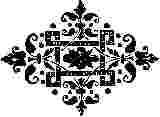
Part I
Another Sign in Heaven
"And I saw another sign in heaven, great and marvelous, seven angels having the
seven last plagues; for in them is filled up the wrath of God." Revelation
15:1
Revelation 15:1-4 sets the stage for our discussion. It starts with
a sign or portent in heaven and mentions "seven plagues," but nothing is said
about pouring them out. The vision introduces the seven final "plagues" which
will consummate or end God's judgments.
This vision is only introductory. Nothing happens in it but the
singing of the Song of Moses and the Lamb, a judgment song that Moses the servant of
God sang just before he died. The Lamb takes up the
Song and gives it to the saints
to sing. We are not left to interpret which saints sing the song. It is interpreted for
us.
"And I saw as it were a sea of glass mingled with fire: and them that had
gotten the victory over the beast [the leopard-like beast of Revelation 13], and
over his image [the Protestant likeness of the papal beast],
and over his mark, and over the
number of his name, stand on [or over] the sea of glass, having the harps [Scriptures]
of God." Revelation 15:2

Sea of Glass
|
These saints are neither the saints of the Gospel age nor even of
the general Harvest period. The saints engaged to sing this
Song are those that
had gotten the "victory over the beast, and over his image."
While in token form the saints have indeed separated themselves from
Babylon in this Harvest time, what is implied here is more than that. These saints have
"gotten the victory over" or conquered the "beast"
and "his image," and his "number."
There was no "beast" or "image" in the early
church. While there was the making of a "beast" starting around
Constantine’s time that began to emerge, this is not what Revelation 15 is focusing
on. Indeed, the saints throughout the age did not worship this dreadful papal beast.
However, the time sequence of our study is when a joint endeavor by both the
"beast" and the "image of the beast" is orchestrated.
The "image of the beast" is represented in the Protestant
Federation, which did not even begin until 1846 with the Evangelical Alliance. Nothing
much came of this movement. When the Evangelical Alliance was dissolved, they gave all
their papers and records to the World Council of Churches.
The World Council of Churches was born in 1948, the same year the
nation of Israel was born. Since that time, liberal elements have aligned the World
Council of Churches more with communism than with the Western world, and the
organization began to lose its way.
Since the demise of
Communism, the World Council has begun to reorient
its focus. They will come to a posture similar to that of the Catholic Church today.
What the two have in common is a desire to become a dominant religious and political force
in the world. The Scriptures teach they will succeed in this. (See Revelation 13:15-18.)
The point of our lesson is that the "beast" and its
"image" will not succeed in making the true saints receive their
"mark," either in their "forehead" or in their "hand," or
even to accept the number of the beast "666," which translated means "Vicar
of the Son of God."
Our head is the Lord Jesus Christ. We recognize no "Vicar" of
Christ, "for one is your Master, … and all ye are brethren." (Matthew 23:8)

Those Who Get the
"Victory"
Over the "Beast" and "His Image"
The "victory" is no small one on the part of the saints.
They refuse to bow before the newly-found powers of the papal "beast" and the
Protestant "image." This confrontation is still before us. Those who
refuse to bow before this unholy coalition of church and state, while they may be severely
tried, shall emerge victorious. They will stand over the "sea of
glass," singing the "Song of Moses and the Lamb."
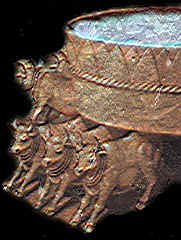 
"Molten Sea" Laver
in Solomon's Temple |
Normally water is fluid. Here it is as glass. In
Solomon’s temple a "molten sea" was contained in a huge laver, which was
ten cubits from brim to brim and five cubits high, supported by 12 oxen. (2 Chronicles
4:2-5) The Revelation "sea of glass" is
"mingled with fire." The judgmental
purging fire will satisfy God's justice. A double cleansing of both water and fire is
implied.
The critical point to remember is that the saints gain the victory
over the "beast" and its "image." Our Lord calls extravagant attention
to these victors. These saints "had not worshipped the beast, neither his
image, neither had received his mark upon their foreheads, or in their hands."
Revelation 20:4
The Lord is obviously very pleased with their performance. By
implication, his displeasure is with those who identified with the "beast"
and its "image." None who worshipped the "beast" or its
"image" may be the bride of Christ. However, the saints' victory does not imply
the destruction of the "beast" and its "image"—only refusal to bow
their knee.
Bro. Russell muses as to whether the vivifying of the "image of
the beast" may have had a certain fulfillment. We understand this was a part of his
untiring effort to keep abreast of possibilities and fitting prophecy into a much tighter
time frame than we now see was necessary or possible. In the preponderance of his articles
and projections, Bro. Russell looked to this victory as a future event. (For more
information, see THE BATTLE OF ARMAGEDDON, Vol. 4, 1916 Foreword, p. 3, and 1912 Foreword, Roman Numeral p. vii-x. and 1912 Foreword, Roman Numeral p. vii-x.
 ) )
The Evangelical Alliance has been disbanded and its papers turned over
to the World Council of Churches. Hence, in the coming federation the "Image of the
Beast" comes to life.
Vivifying the "image" is not the subject at hand. However,
it is central to establishing the time when the saints get the victory over the
"beast" and its "image." That is where we take up our study. The
saints have yet to take on the "beast and its image," as referred to in
Revelation 13:15-17. Refusing the demands of the Papacy
and Protestants, they gain the "victory."

After this "victory," the saints stand
over the "sea of glass mingled with fire," having the "harps" of the
Old and New Testaments. The "seven last plagues" have not yet been poured.
At this point those who refuse to bow the knee to the "beast and
his image" are to sing the "Song of Moses and the Lamb." We are not left to
conjecture as to what that song might be. We are given the words of this song:

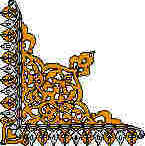
|
"Great
and marvelous
are thy works,
Lord God Almighty!
Just and true are thy ways,
thou King of saints!
Who shall not fear thee, O Lord,
and glorify thy name?
For thou alone art holy:
for all nations shall come
and worship before thee;
for thy judgments
are made manifest." |
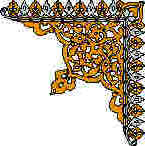
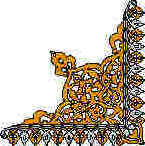
|

Two Songs of Moses
There are two Songs of Moses.
| (1) When Pharaoh and his minions were
destroyed (picturing the second death of Satan after the Millennium), Moses and all the
Israelites sang one song after the victorious crossing of the Red Sea. |
This pictures when the whole people of God are delivered at the
end of the Millennium (Psalms 136:15).
While there was a sea in that picture, it was not a sea of glass mingled with
fire. Rather, it was a separated sea caused by a strong east wind, implying some
turbulence. The "seven plagues" do not destroy Satan—they only defeat him in
his warfare, resulting in his landing in the "bottomless pit."
The Red Sea Song cannot be referred to in Revelation 15:2, because
Satan and the "leopard beast" are still alive and active, certainly not in the
pit yet.
When it says "the saints" get the victory over the
"beast and his image" it means they successfully refused to receive its
"mark" or "number"—not that they destroyed them. No, that
destruction awaits the pouring out of the seventh and last "plague." The victory
of the saints is in refusing the "mark of the beast" and "his
image"—that is all.
| (2) The Song of Moses referred to in
Revelation 15:2 is undoubtedly the song Moses sang before his death in Deuteronomy 32. |
This Song has two parts to it.
(See Deuteronomy 31:30 — 32:43.)
The first part deals with God's treatment
of his wayward people and their punishment.
The second part deals with God's punishment
of the enemies of his people.
"Rejoice, O you nations, with his people: for he will avenge the blood of
his servants, and will render vengeance to his adversaries, and will be merciful unto his
land, and to his people." Deuteronomy 32:43
This
Song of Moses is the precursor to the pouring out of the
"vials." It is God's justification for using the "sea of fire" below
the glass. The "sea of glass" protects the saints standing over it. Those below the "glass" take the fire and heat—which would be those
systems who oppose the Lord and his people. (See Reprint 3078.)
This
Song of Moses is preparatory to the pouring out of the
"seven last plagues." It gives meaning and reason for the ensuing
"plagues." We do not overlook the fact that the "seven angels'"
messages are identified with the Harvest message. The
Harvest message contains the
plague-producing ingredients.
In one sense these plague-producing elements were proclaimed
throughout the Harvest, to cause Babylon some discomfort. But the plague-producing
elements did not bring about the demise of Babylon's systems.
Babylon seems to have weathered the assaults of truth in our
time and remains powerful enough to cause the saints considerable grief. The "seven
last plagues" will precipitate Babylon’s destruction.

The "Image of the Beast"
Becomes History
After Revelation 15:2
After the saints get the victory over the "beast" and
"his image," we no longer find the "image of the beast" around. Just
like the woman of Revelation 12—we do not know what happens to her, we are not told what
happens to this "image." Nothing more is said about the "image" except
as a historical reference.
The papal "beast" is "cast alive into the lake of
fire" in Revelation 19:20, but no mention is made of the "image" being
"cast alive" into that lake. The "image" just fades off the screen
after this point. But this is no accident.
Why should the "image" escape the same fate as the
"beast"? We do not know, except to observe that something must have
happened along the way to make the "image" less than a "beast"—a
union of church and state. It could be that after the world experiences a financial
collapse, our constitutional government may become a military state under martial law.
During such an interim the church and the state may have powers that
they could not have under the constitution. After this power is exercised for a season,
constitutional government may come back. This would declaw and defang the "image of
the beast" somewhat—perhaps making it no more than an accomplice of the "false
prophet," as in Revelation 16:13.
We cannot be sure as to why the metaphor changes from the "image
of the beast" to the "false prophet." The "false prophet" is
identified with the "two-horned beast" of Revelation 13:11, 12 with no stated
connection to the "image of the beast" in Revelation 19:20.
The important point to observe is that the "plagues"
are not poured out while the saints are getting the "victory" over the
"beast" and "his image." No!
While the "seven
angels" have "seven plagues" in this vision, nothing is said about their
being "poured out."
Click to go to the following:
 Image
of the Beast
Image
of the Beast
 Song
of Moses
Song
of Moses
Topical Studies on:
The Seven Last Plagues Part I - Part II - Part III - Part IV
CHAPTER/VERSE BY VERSE STUDY
ON THE SEVEN LAST PLAGUES:
Revelation 16
Topical Study Home Page - Chapter Study Home Page
- Sinaitic Manuscript - Questions - Glossary.
E-Mail
Day7000@sbcglobal.net with comments.
Copyright 2001 John Class
|